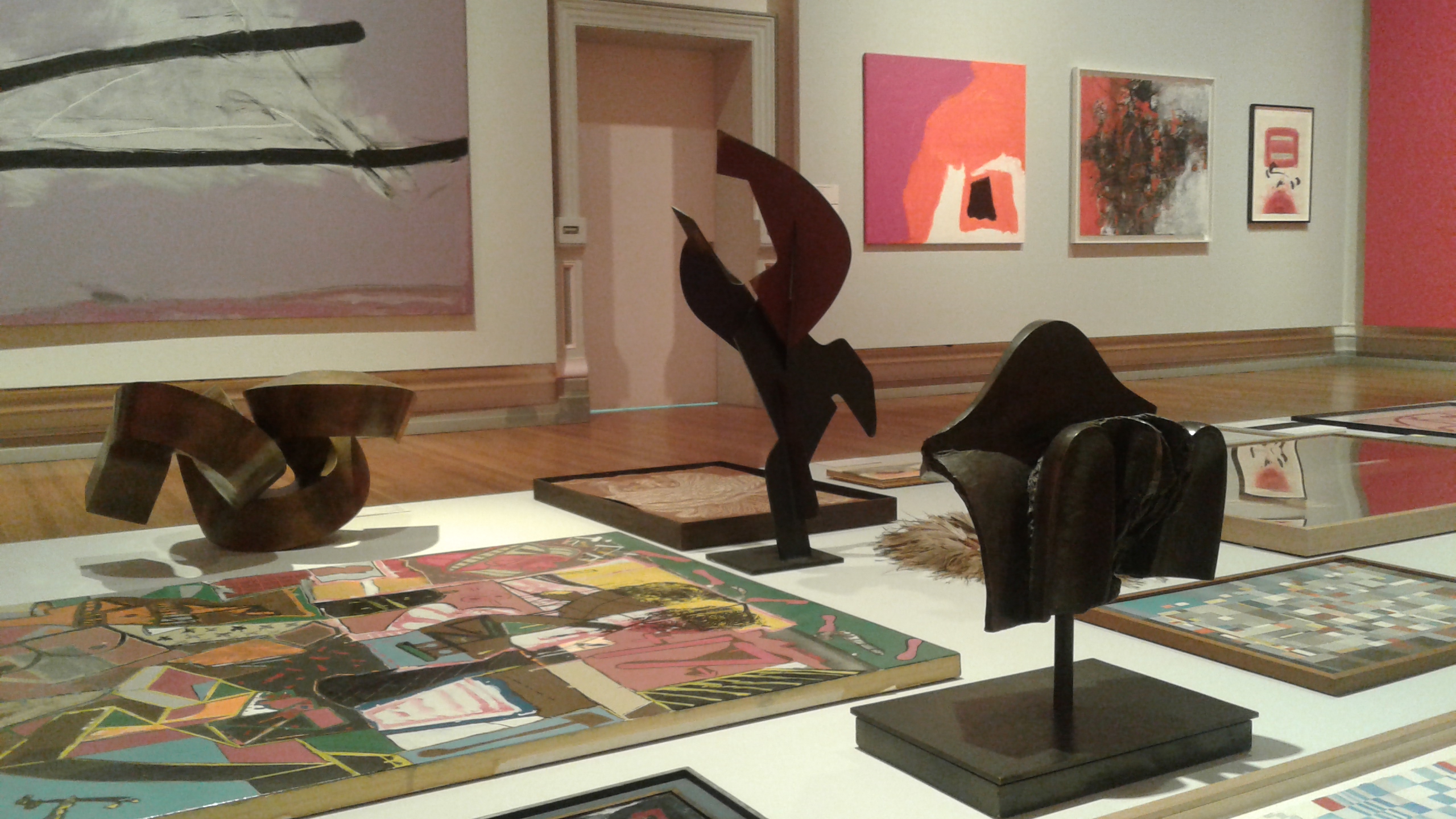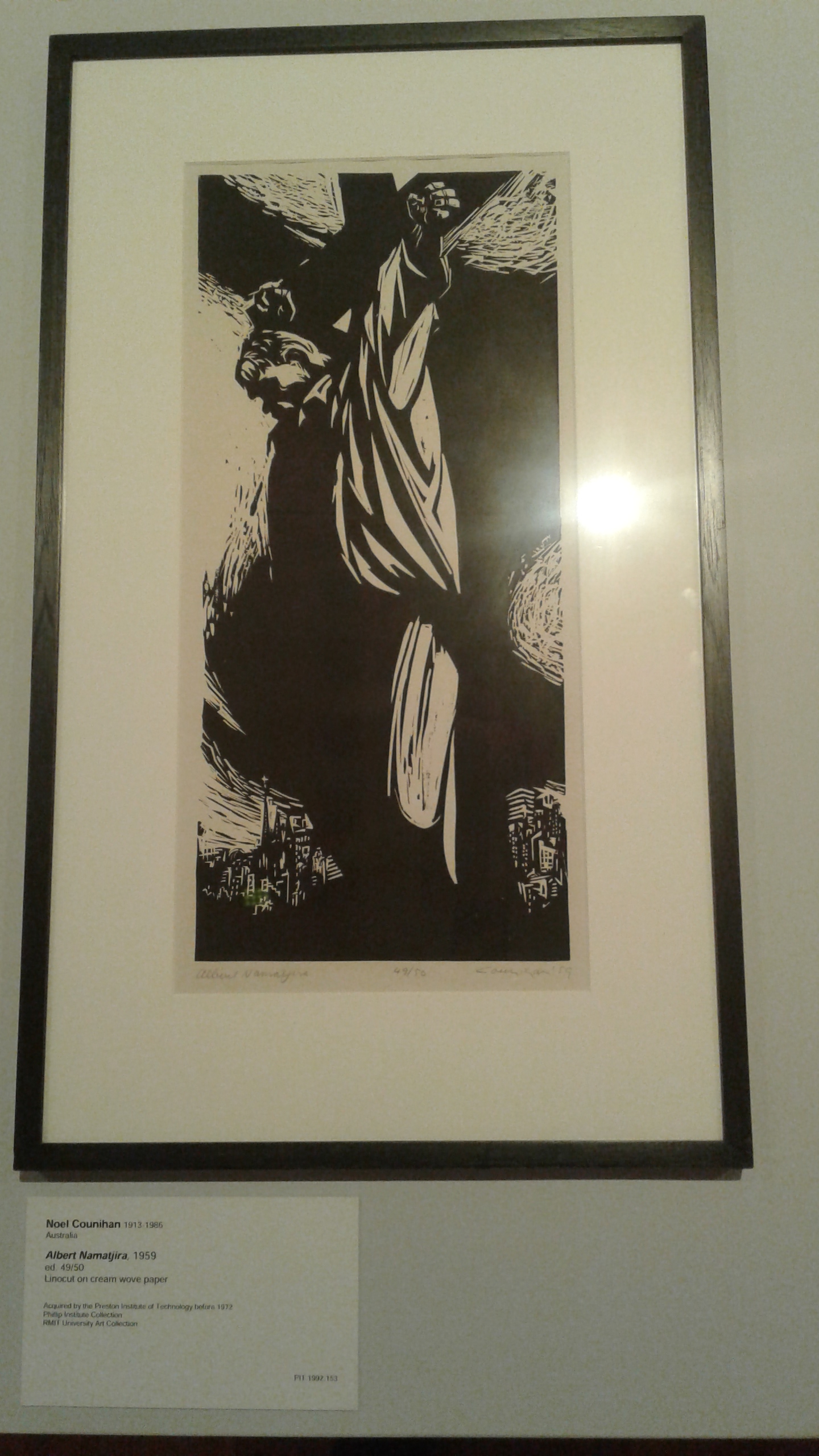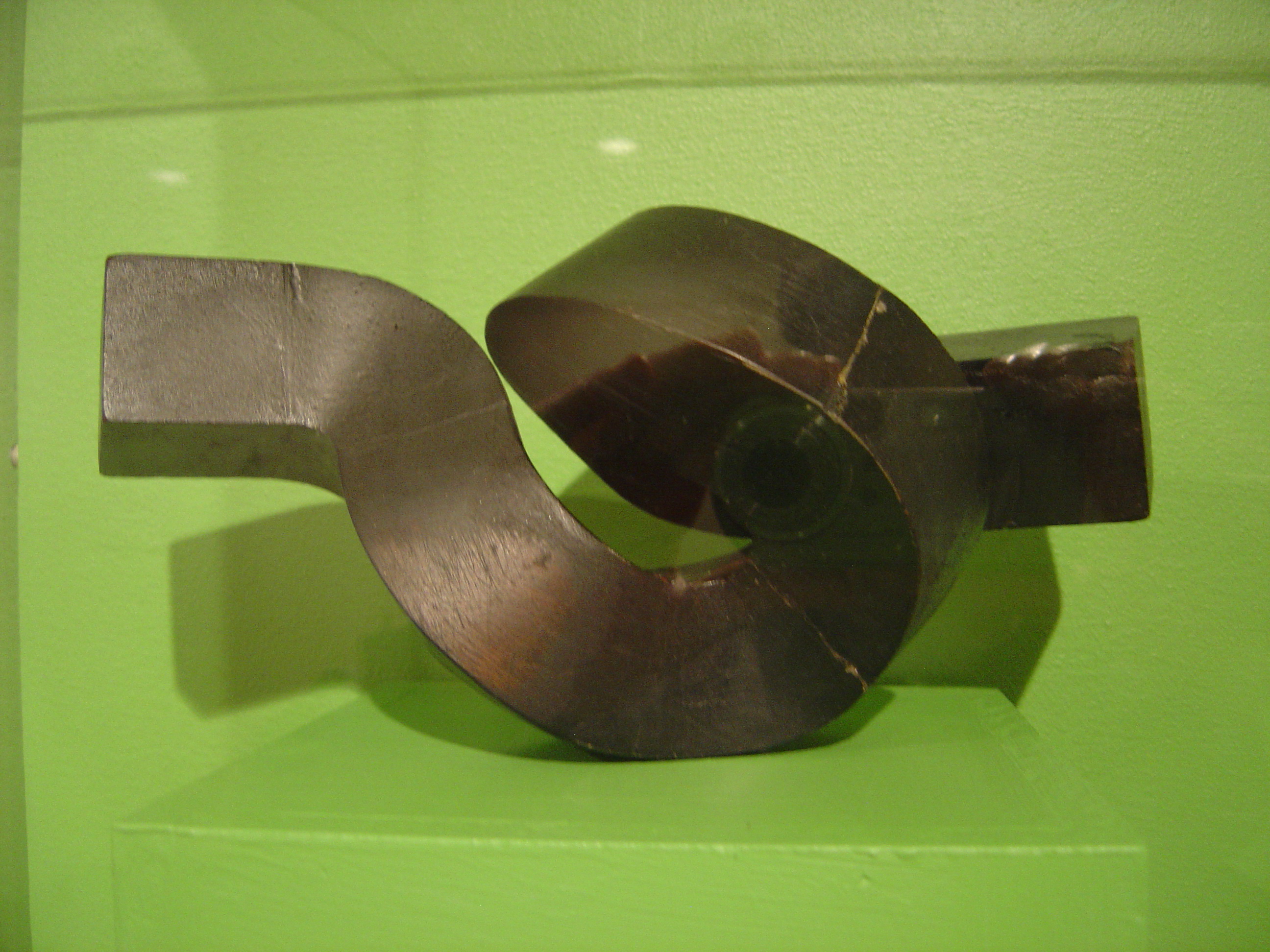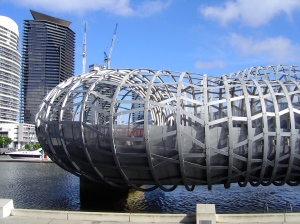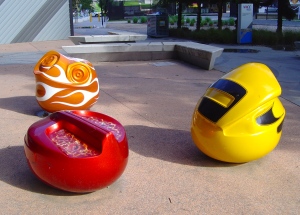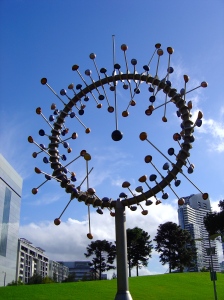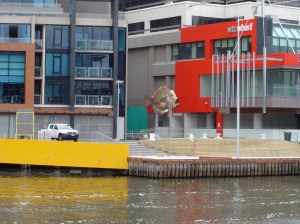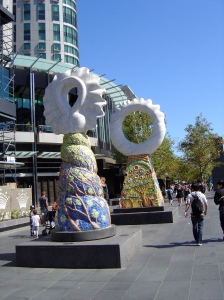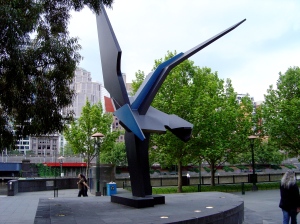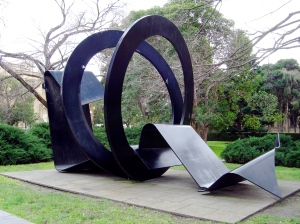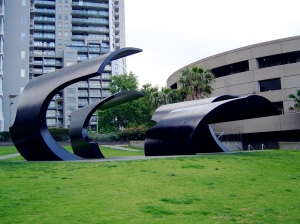On world refugee day March 20, the Metropolitan Museum in New York shrouded paintings by refugees. “What would the Met’s walls look like if there were no refugees?” (No Max Beckmann, Marc Chagall, Ibrahim El-Salahi, Max Ernst, Piet Mondrian, Sopheap Pich, Mark Rothko) If that had been done at the opening of RMIT’s exhibition, “Melbourne Modern: European art & design at RMIT since 1945”, there would have been many shrouded works.

In his opening remarks Philip Goad pointed out the contribution of the European modernists to RMIT. Without the post-war refugees RMIT and Australia’s culture (art, design, food, life) would be boiled, bland and ugly. It is clearly visible in the high tide mark of modern art, architecture, jewellery, fashion and other designs in this extensive exhibition at RMIT Gallery.
It is especially evident in the sculpture. The central sculptures in the main gallery are by Teisutis Zikaras, Inge King and Vincas Jomantas; all were displaced by WWII and were essentially refugees.

Teisutis Zikaras was the first of five émigré sculptors to teach at RMIT. His geometric mother and child in the exhibition are a homage to cubism and European modernism.

There are two familiar black steel sculptures by Inge King; many local people would be familiar with King’s sculptures from her public works. Her Daruma are particularly elegant reducing the traditional Japanese doll to two curved planes.

Vincas Jomantas is particularly important to the RMIT art department; indeed the curators refer to 1961-1987 as the “Jomantas years” in wall notes. Jomantas may not be a famous artist but his influence on generations of sculptors is a greater legacy.
Jomantas black wooden curved forms in Birds of Death (1964-5) and his white geometric forms of Landing Object II (1971).
Even at modest scale in their sculptures look monumental. Their simple solid forms stand of symbols of modern sense of freedom.
So much of modern culture has been created refugees. Successful and humane countries took them in far greater numbers and far earlier than Australia. Who knows what damage current Australia’s refugee policy is doing to its culture because it takes decades to measure this; Australia definitely lost at least one refugee who is now a Fulbright scholar.
I don’t want any smug ALP supporters reading this and thinking that anyone who doesn’t support the current refugee policy should support the ALP. The ALP started the cruel policy of indefinite detention of refugees under Paul Keating (a creature with less compassion than a snake) and has no plans to end it. I call on my readers to imagine a better world where there is no ALP or LNP and then to do everything that they can to make it a reality.
“Melbourne Modern: European art & design at RMIT since 1945” was curated by Jane Eckett and Harriet Edquist.

